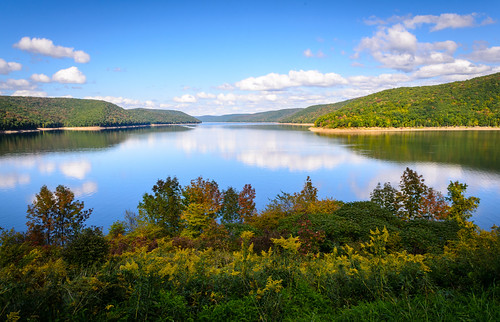
Something we do every day for survival is something we often take for granted – breathing. And a very important component of breathing is clean air. Air quality has a direct effect not only on the health of people, but also ecosystems.
The Air Program in the Eastern and Southern regions of the U.S. Forest Service oversees a resource that affects and integrates with other resources, from smoke management to watersheds and wilderness to recreation and vegetation.
Air Program staff work with federal, state, local, tribal, and non-government agencies to improve air quality and by extension, ecosystem health. The ways they accomplish this include: smoke monitoring; providing input in developing and maintaining state smoke management programs; providing input and analysis to projects with activities that could affect air quality; air quality monitoring; and ensuring that forest management plans include activities to meet national standards set by the Clean Air Act.
And, we are seeing results.
In the midst of news about worsening environmental degradation due to climate change, air quality in the Eastern and Southern regions is improving. Data compiled by the Air Program from 2004 to 2013 shows that rain became less acidic, wilderness views became clearer, and tropospheric ozone levels dropped on our national forests. That means residents from Minnesota to Missouri to New Hampshire in the East, and from Virginia to Florida to Puerto Rico in the South are breathing easier and enjoying more scenic views.
These findings are attributed to decades of work by the Forest Service and partners from state and federal air regulatory agencies.
It’s hoped that additional positive findings will stem from this, such as improvements in soil productivity and health of aquatic organisms. Environmental scientists at the Environmental Protection Agency (EPA) have already collected data showing improvements in acid neutralizing capacity in some Adirondack and Catskill streams and lakes, a key environmental indicator of aquatic health. We expect similar findings will soon be discovered in streams in the Eastern Region.
We can all celebrate by looking for opportunities to contribute to clean air in our communities. EPA has some great tips that you can use today.

